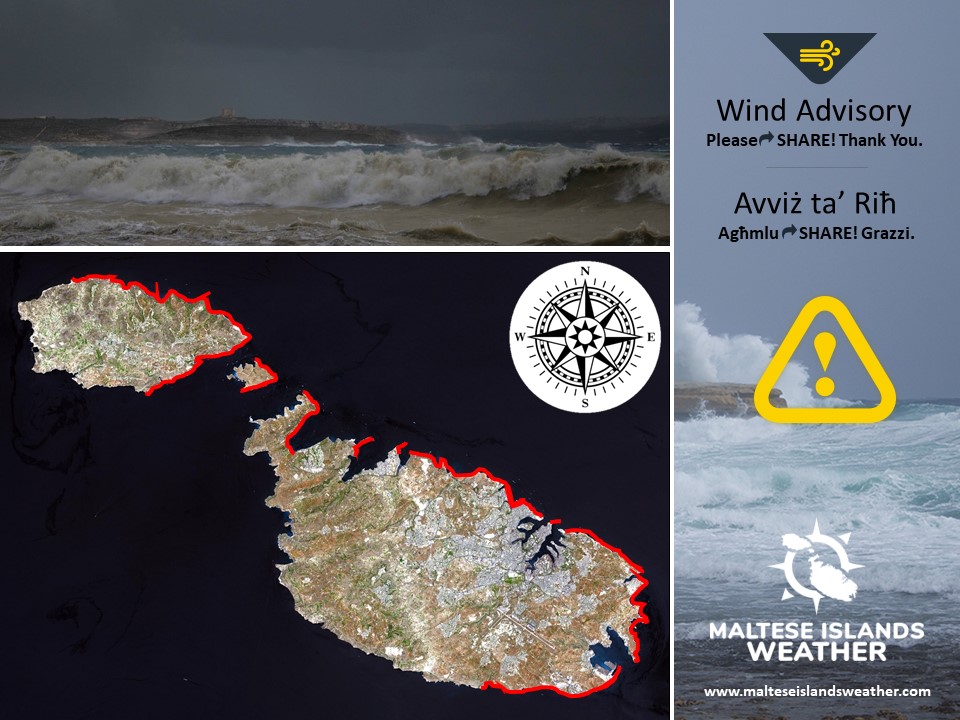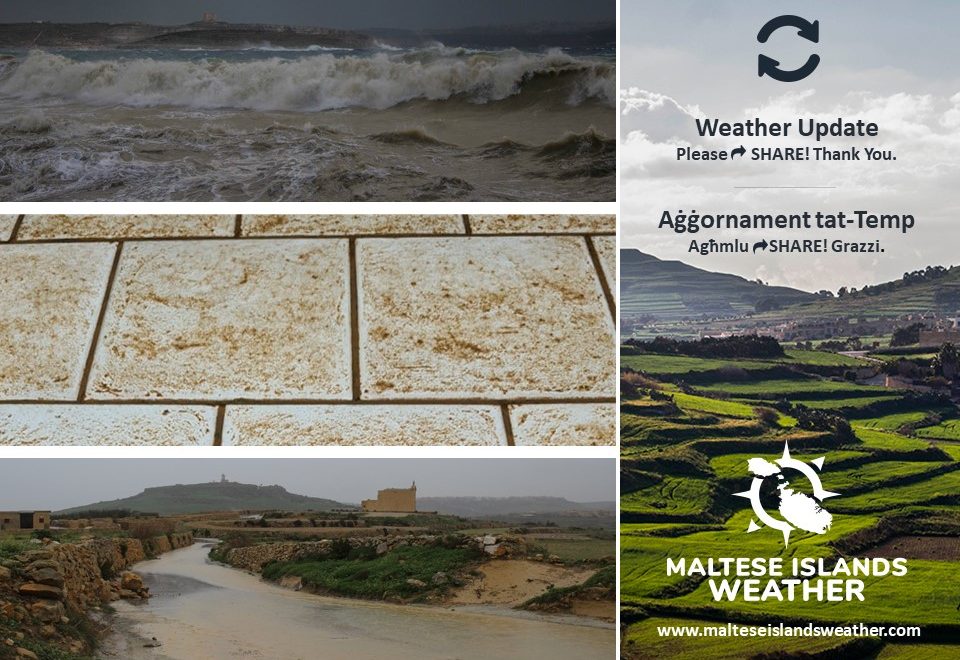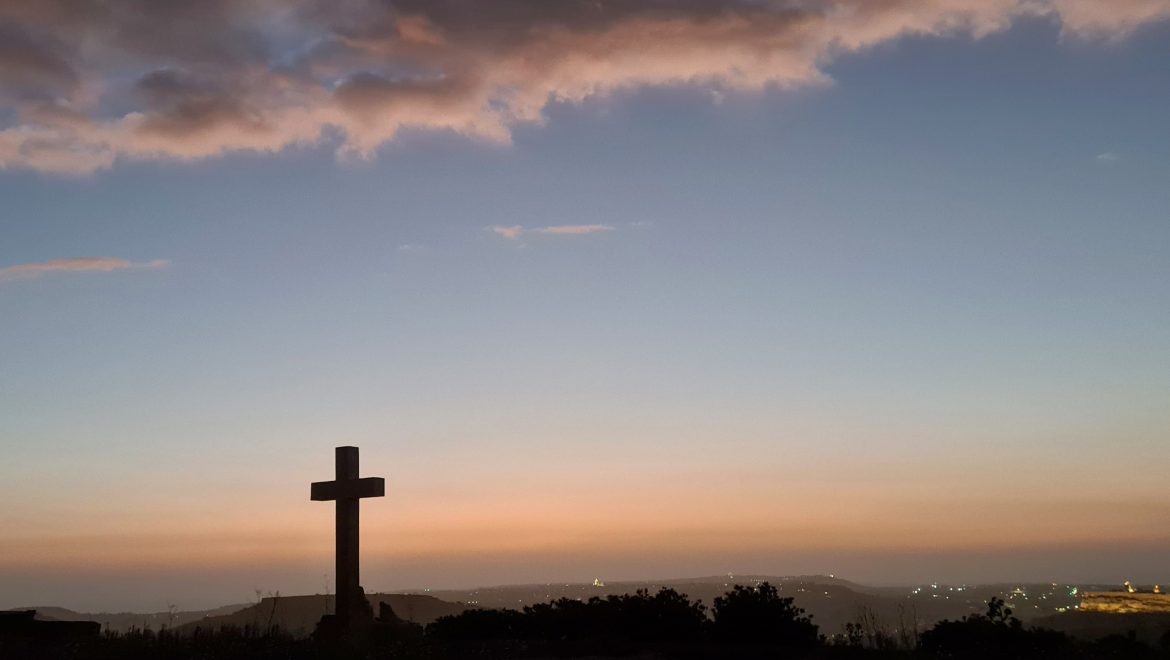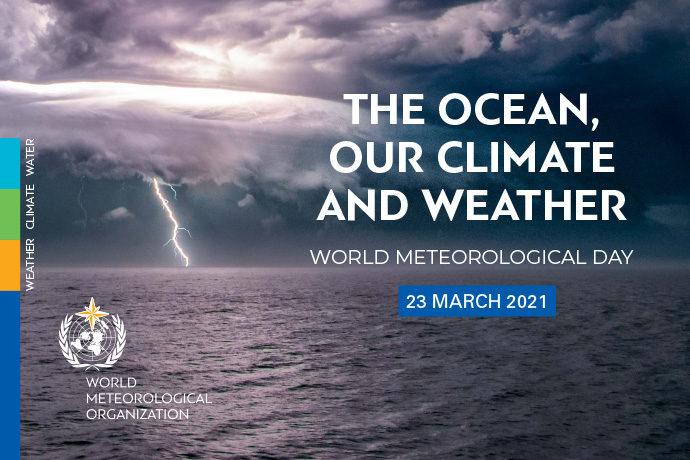GALE-FORCE WIND WARNING / TWISSIJA TA’ RIEFNU
ENGLISH/INGLIŻ
An intense low pressure system emerging from north Africa will move into the Gulf of Gabes on Friday 16th April. Air from high pressure over the Sahara Desert will rush in to fill this low pressure system https://polska-ed.com/kupic-generic-cialis/. This rushing air will generate a gale-force Scirocco. This warning is valid from 00:00 till 21:00 on Friday 16th April. The warning will be updated when and if necessary. The information below describe how the situation will develop over this time period.
Friday 16th April
00:00 to 03:00 – East Force 5 to 6
03:00 to 06:00 – East Force 6 to 7
06:00 to 09:00 – East Force 7 to 8
09:00 to 12:00 – East Force 7 to 8 (with gusts of up to Force 9)
12:00 to 15:00 – East Force 7 to 8
15:00 to 18:00 – East to East Northeast Force 6 to 7
18:00 to 21:00 – East Northeast 5 to 6
The peak gusts will blow across the Maltese Islands in the morning, when they could reach Force 9 at times across exposed areas of the Maltese Islands. The sea will be very rough, with wave heights of up to 6 metres in peak gusts. The swell will be a low to moderate East, especially in the second half of the day. The map indicates the coast most exposed to this gale-force wind and very rough sea. Airborne fine desert sand will be present in abundance.
The wind will decline gradually to become mainly moderate (Force 4 to 5) by morning on Saturday 17th April, before shifting Northwest.
MALTI / MALTESE
Sistema ta’ pressjoni baxxa intensa minn l-Afrika ta’ fuq se tersaq fuq il-Golf ta’ Gabes nhar il-Ġimgħa 16 ta’ April. Arja minn pressjoni għolja fuq id-Deżert tas-Saħara se timla din is-sistema ta’ pressjoni baxxa bilmod u timmanifesta ruħha bħala riefnu mix-Xlokk. Din it-twissija se tkun fis-seħħ minn 00:00 sa 21:00 ta’ nhar il-Ġimgħa 16 ta’ April u se tkun aġġornata kif u jekk ikun meħtieġ. L-informazzjoni ta’ hawn isfel tindika kif se tiżviluppa s-sitwazzjoni mal-ħin.
Il-Ġimgħa 16 ta’ April
00:00 sa 03:00 – Lvant Forza 5 għal 6
03:00 sa 06:00 – Lvant Forza 6 għal 7
06:00 sa 09:00 – Lvant Forza 7 għal 8
09:00 sa 12:00 – Lvant Forza 7 għal 8 (b’buffuri sa Forza 9)
12:00 sa 15:00 – Lvant Forza 7 għal 8
15:00 sa 18:00 – Lvant għal Grieg il-Lvant Forza 6 għal 7
18:00 sa 21:00 – Grieg il-Lvant Forza 5 għal 6
Il-buffuri l-aktar qawwija se jolqtu l-Gżejjer Maltin matul filgħodu, meta jistgħu jlaħħqu sa Forza 9 fl-inħawi l-aktar esposti tal-Gżejjer Maltin. Il-baħar se jkun qawwi b’mewġ għoli 6 metri fil-buffuri l-aktar qawwija. L-imbatt se jkun baxx għal-moderat mill-Lvant, speċjalment fit-tieni nofs tal-jum. Il-mappa ta’ hawn taħt tindika l-kosta l-aktar esposta għal dan ir-riefnu u baħar imqalleb ħafna. Se jkun hemm preżenza abbundanti ta’ trab fin fl-arja.
Ir-riħ se jonqos gradwalment u jsir il-biċċa l-kbira moderat (Forza 4 għal 5) sa filgħodu tas-Sibt 17 ta’ April, qabel ma jaqleb Majjistral.











